Healthy foods for people with diabetes
Diabetes is a disease that typically affects the insulin-producing cells of the pancreas. These cells help control how the body processes blood sugar, also known as blood glucose. For example, the cells produce the hormone insulin after you eat, which helps move blood sugar out of your bloodstream and into the muscles and liver, where it can be used as fuel. People with type 2 diabetes, the most common type of diabetes, lose their sensitivity to insulin (known as insulin resistance). People with type 1 diabetes, on the other hand, have an autoimmune disease that destroys their insulin-producing cells.
In both cases, blood sugar can rise to dangerous levels. People with diabetes need to be especially careful about what they eat to help keep their blood sugar levels in the safe zone (or to take enough insulin to process their intake of carbohydrates, which is the main component of food that drives blood sugar.) People with diabetes should consult with a registered dietitian or certified diabetes educator to talk about the eating plan and foods for diabetes that are best for them. However, here are a few types of food that may help control blood sugar or possibly help prevent type 2 diabetes when consumed as part of an overall healthy diet. (Type 1 diabetes cannot be prevented.) Check out this list of foods for people with diabetes to plan your meals.
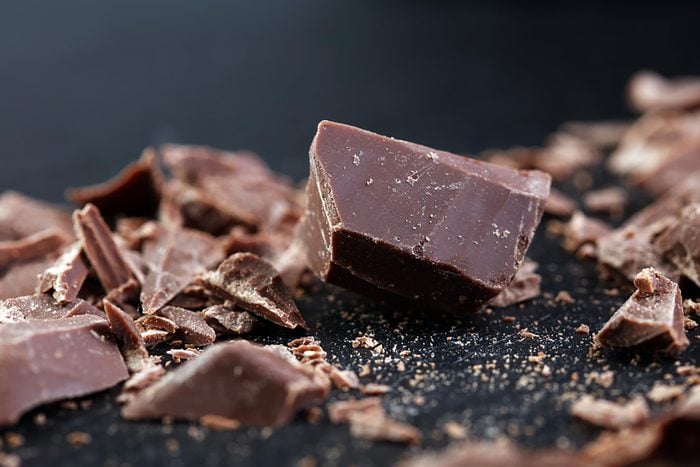
Dark chocolate
Chocolate might not be first on the list of foods for people with diabetes, but a review of studies published in 2017 in the Journal of Community Hospital Internal Medicine Perspectives suggested that cocoa may slow down the progression to type 2 diabetes and improve insulin resistance. It may even help stave off cardiovascular complications in people with diabetes, although the authors note that large, randomized controlled studies would be needed to confirm that this is true.
Dark chocolate is rich in flavonoids, and research shows that these nutrients may help reduce insulin resistance, improve insulin sensitivity, drop insulin levels and fasting blood glucose, and blunt cravings. One caveat: most cocoa products or chocolates on the supermarket shelf contain low amount of flavanols and are rich in sugar and calories that may aggravate glycemic control in type 2 diabetes patients, according to a 2017 study published in the journal Antioxidants.
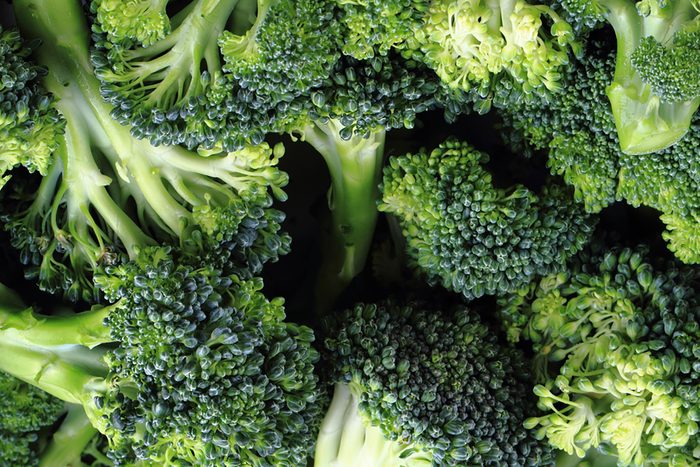
Broccoli
As with other cruciferous veggies like kale and cauliflower, broccoli is a diabetes-friendly food contains a compound called sulforaphane. According to research in the journal Oxidative Medicine and Cellular Longevity and Science Translation Medicine, it triggers several anti-inflammatory processes that may improve blood sugar control and protect blood vessels from the cardiovascular damage that’s often a consequence of diabetes. (Cardiovascular disease is the leading cause of death for people with diabetes.) Sulforaphane also helps flip on the body’s natural detox mechanisms, coaxing enzymes to turn cancer-causing chemicals into more innocent forms that the body can easily release, per the journal Oxidative Medicine and Cellular Longevity. Not a broccoli lover? “Prepare until al dente—cooked through, yet still firm—and add to a stir-fry of ingredients you enjoy, like chicken, bell pepper, and peanuts,” says registered dietitian nutritionist Jackie Newgent, chef, and the author of The Clean and Simple Diabetes Cookbook. “If raw, consider serving with a dip, like hummus.”

Blueberries
Near the top of the list foods for people with diabetes is blueberries. They stand out because they contain both insoluble fiber (which helps reduce fat absorption) and soluble fiber (which slows down the emptying of your stomach, and improves blood sugar control). That’s not all: A review of studies about blueberries, which was published in the journal Antioxidants in 2016, suggests that blueberries may have a beneficial effect on insulin resistance and glucose tolerance, among other benefits. (Make sure you’re following these breakfast rules for diabetics.)

Steel-cut oats
Some research suggests that oatmeal may help reduce the risk of developing type 2 diabetes. This is one of the healthy foods for people with diabetes because it contains high amounts of magnesium, and according to the journal Nutrients, it helps the body use glucose and secrete insulin properly. Plus, a study published in 2018 in The Journal of Nutrition suggested that eating a diet rich in whole grains—the researchers singled out rye bread, whole-grain bread, and oatmeal—may reduce your risk for type 2 diabetes. Keep in mind: Steel-cut oats are just as easy to cook as quick-cooking oatmeal, says Newgent. But when grains are left whole they are filled with the fiber, nutrients, and bound antioxidants that challenge digestion in a good way, allowing blood sugar to remain more stable. That’s why oats are on the list of foods for people with diabetes.

Fish
Fish is a slimming star, which is a big reason it makes the list of foods for people with diabetes: Rich in protein, it helps keep you satisfied, but this diabetes-friendly food also contains a special type of fat that helps cool inflammation. Many studies show that people with the highest blood levels of omega-3 fatty acids have less body-wide inflammation, and inflammation has been linked to type 2 diabetes and weight problems. Indeed, a study published in 2016 in the journal Food & Nutrition Research found that a diet rich in omega-3 fatty acids can help prevent cardiovascular disease and reduce inflammation in people with high blood pressure and/or diabetes.
A fish-rich diet may also reduce your risk of developing health problems or complications as a result of your diabetes. Salmon is the most obvious go-to, but it’s not the only fish loaded with good-for-you fat. “Sardines and anchovies are rich in omega 3’s,” says Newgent. “Grill or pan-grill sardines, then squirt with lemon and serve on top of avocado toast for a more intriguing and balanced bite—or squirt with lime and enjoy as the feature ingredient in fish tacos.” (When you’re tired of making meals at home, try out these tasty restaurant dishes that are great for people with diabetes.)

Olive oil
Following a Mediterranean-style diet, which is rich in olive oil, and engaging in physical activity is a winning combination for anyone looking to lose weight and prevent or delay a type 2 diabetes diagnosis. A study published in Diabetes Care in 2019 showed that overweight or obese people with prediabetes or type 2 diabetes who exercised and followed a calorie-restricted Mediterranean diet lost more weight, had better glucose control, and were more sensitive to insulin than a control group given standard healthy eating advice.
In addition, a diet that is high in monosaturated fats, like olive oil, and lower in saturated fats is also associated with improvements in cardiovascular health, lower LDL cholesterol, and reduced triglycerides and blood pressure, says registered dietitian Alison Massey, and certified diabetes educator at Frederick Primary Care Associates in Frederick, Maryland. (Here’s more on what to eat to lose weight for diabetes.)
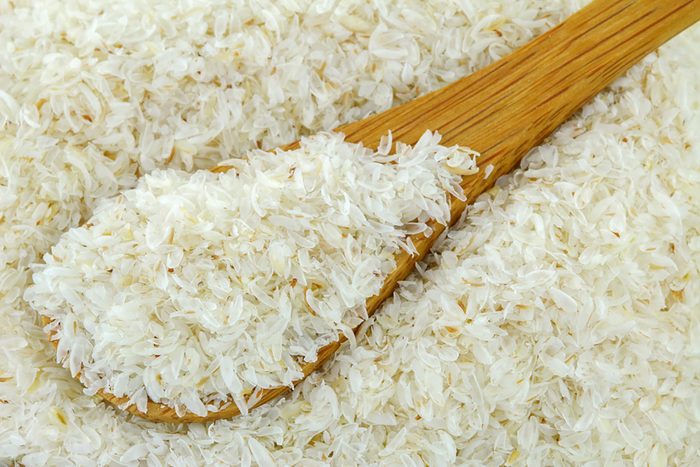
Fiber
Healthy foods for people with diabetes have lots of fiber. A review of studies published in 2018 in the Journal of Chiropractic Medicine suggested that a high-fiber diet may help prevent type 2 diabetes. The researchers recommend that people with type 2 diabetes increase their intake of fiber-rich foods, such as high-fiber cereals, or to use fiber supplements. Psyllium husk, a fiber supplement long used for constipation relief, may help people with type 2 diabetes control blood sugar better. (Here’s how to get more fiber in your diet without even trying.)

Cannellini beans
Packed with protein and cholesterol-lowering soluble fiber, legumes such as tender, white cannellini beans are slow to raise blood sugar. No wonder beans landed at the top of the list of healthy foods for people with diabetes recommended by the American Diabetes Association (ADA). Along with kidney, pinto, navy, and black beans, cannellini beans are high in fiber and packed with vitamins and minerals like magnesium and potassium. To save time you can use canned beans, but be sure to drain and rinse them to get rid of as much added salt as possible (or buy low sodium versions). Here are some other ways to incorporate beans into your meals with these tricks for diabetes diet planning.

Dairy
The calcium and magnesium in milk, cheese, and yogurt may make your body more sensitive to insulin, according to research, including a study published in the American Journal of Epidemiology. In a study published in a 2017 issue of the journal Nutrients researchers studied more than 130,000 Korean adults ages 40-69 and they found that the more milk participants consumed, the less likely they were to have metabolic syndrome, a cluster of symptoms that increases your risk for diabetes and heart disease. (Here are other tips for the best eating habits for people with diabetes.)

Spinach
Spinach—along with collards, kale, and other dark leafy greens—are in the number two spot on the ADA’s round-up of recommended foods for diabetes. That’s because spinach is particularly rich in vitamin K, along with minerals such as magnesium, folate, phosphorus, potassium, and zinc. It’s also a good source of the plant chemicals lutein and zeaxanthin, and various flavonoids. Although spinach is technically a rich source of calcium, another nutrient in spinach called oxalic acid prevents much of that calcium from being absorbed. “To help prevent that interference from oxalic acid, cook spinach just slightly,” suggests Newgent. Here are some other benefits of spinach to convince you to eat more leafy greens.
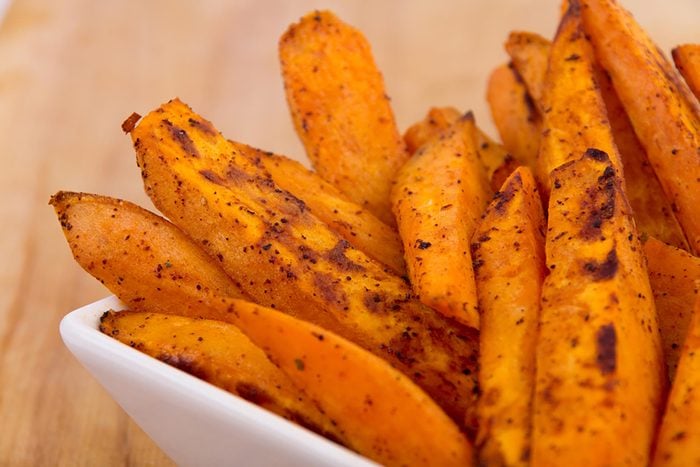
Sweet potatoes
One analysis of several studies, which was published in 2013, found that sweet potatoes reduced A1C measures between 0.30 and 0.57 percent and fasting blood glucose by 10 to 15 points compared with placebo—although the authors concluded that more research is needed. (Hemoglobin A1C is a measure of long-term levels of high blood sugar.) Sweet potatoes do contain anthocyanins, the natural pigments that give the sweet potato its deep orange color, and antioxidants, compounds that help defend your cells from damage caused by potentially harmful molecules known as free radicals.
“For people with diabetes, I suggest scrubbing sweet potatoes and leaving on the peel for bonus fiber,” says Newgent. “Or pair with ingredients that are rich in protein, healthy fats, or both. For instance, cook cubes of sweet potato into chili or prepare a hash brown dish by sautéing cubes of sweet potatoes along with lots of non-starchy veggies like green peppers, red peppers, and onions. You can make good-for-you sweet potato fries, too. Just toss them in olive oil—don’t be too skimpy—add your favorite seasonings, and bake until crisp. Looking for more yummy foods? Search no more: diabetic-friendly comfort food recipes.

Walnuts
The most widespread tree nut in the world, this diabetic diet food contains the polyunsaturated fatty acid called alpha-linolenic acid, which has been shown to lower inflammation. The L-arginine, omega-3s, fiber, vitamin E, and other phytochemicals found in walnuts and other tree nuts make them potent: scientists say they may have antioxidant, anticancer, antiviral, and anti-high cholesterol actions. That’s why they are one of the healthiest nuts you can eat. Snack on walnuts straight from the shell; the time it takes to crack them open may help you slow down your consumption, so your body has more time to register the food and feel satisfied.
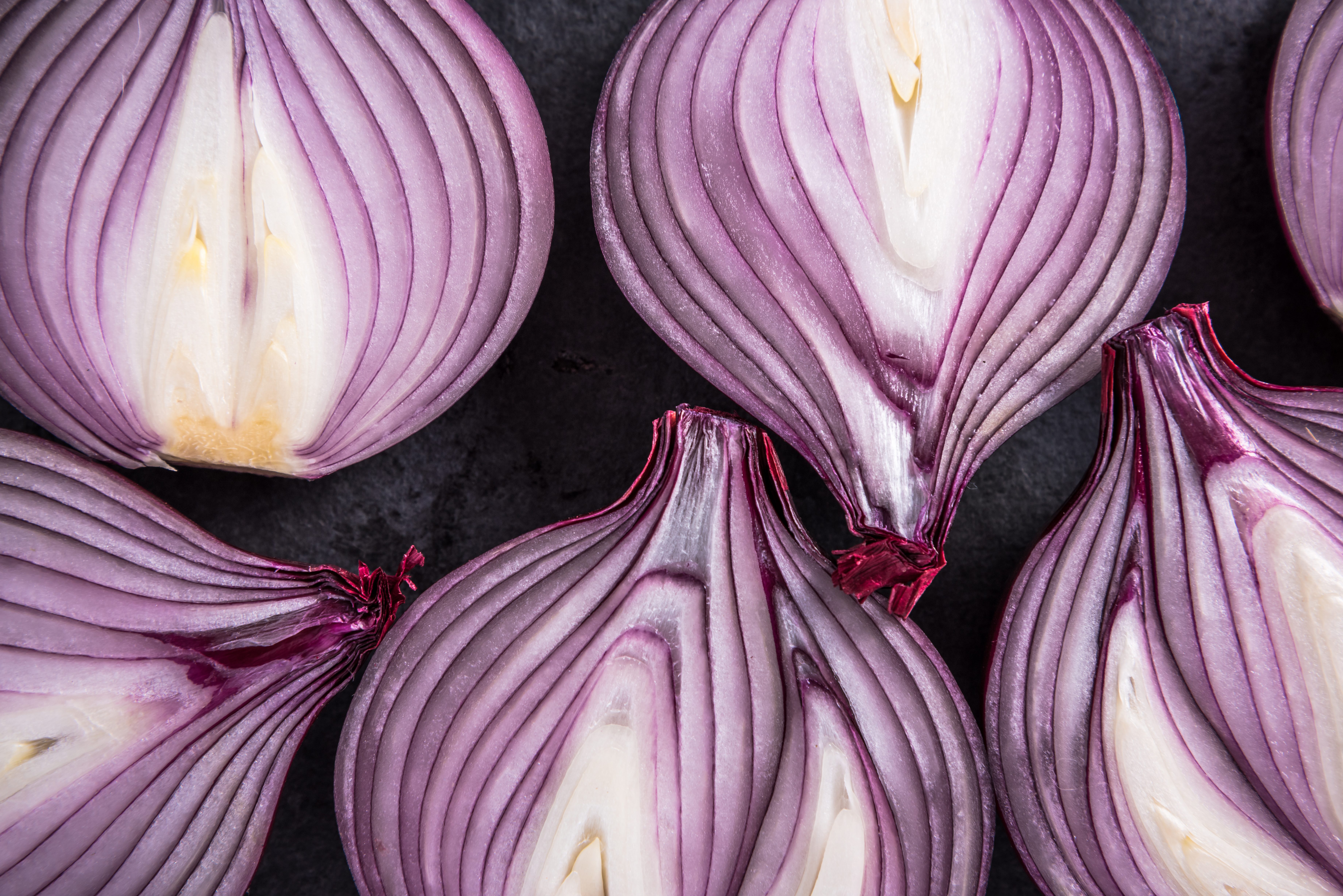
Red onions
Research suggests onions help lower blood glucose. In a study of 42 people published in Environmental Health Insights in 2010, researchers found that eating about 3.5 ounces (100 grams) of fresh red onion lowered fasting blood sugar levels by about 40 mg/dl after four hours. The findings mirror the results of a number of studies in animals, including one published in 2013 in the journal Preventive Nutrition and Food Science.
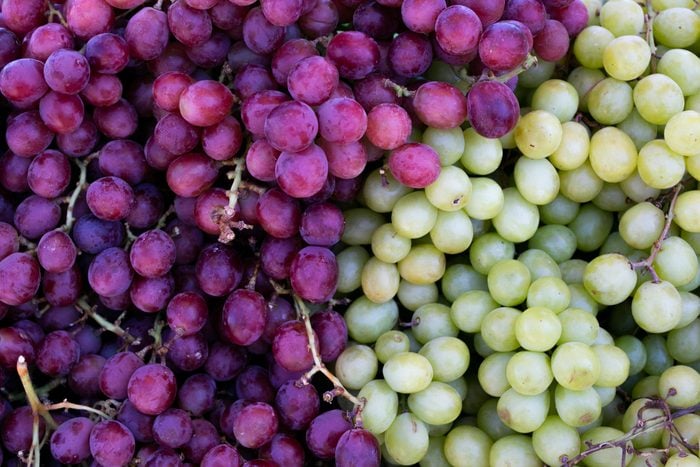
Grapes
“In addition to its naturally-occurring sugar, fruit offers fiber and plenty of plant-based nutrients that are actually beneficial for diabetes management,” says Newgent. Grapes are packed with substances called phytochemicals that are compounds that are believed to have protective health benefits, reports research in The Journal of Nutrition. They have a low glycemic index and glycemic load, which are measures used to calculate a food’s impact on blood sugar. One study, published in 2016 in the British Journal of Medicine, suggests that the phenols derived from red grapes and acai berries, among other foods, may help reduce the release of inflammatory molecules from white blood cells in laboratory tests.
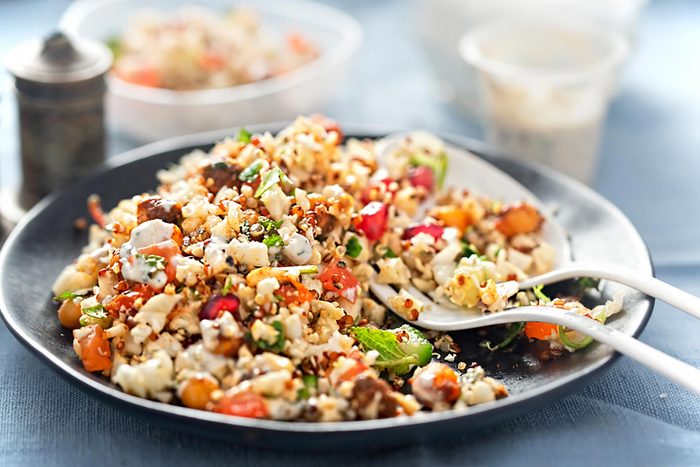
Quinoa
Quinoa tastes like a grain, but it’s more closely related to spinach than it is to rice. Contrary to most grains, it’s a good source of complete protein (14 grams per 1/2 cup), boasting all nine essential amino acids. One is lysine, which helps the body absorb all that fat-burning calcium and also helps produce carnitine, a nutrient responsible for converting fatty acids into energy and helping to lower cholesterol.
One of the most fiber-rich grain-like foods, quinoa contains 2.6 grams per 1/2 cup, and fiber helps to balance blood sugar levels and keep you fuller, longer, per 2008 research in the Journal of Nutrition. And if you’re hesitant to incorporate grains and starches into your diet, read up on these common diabetes diet myths. (Hint: quinoa is one of them.)
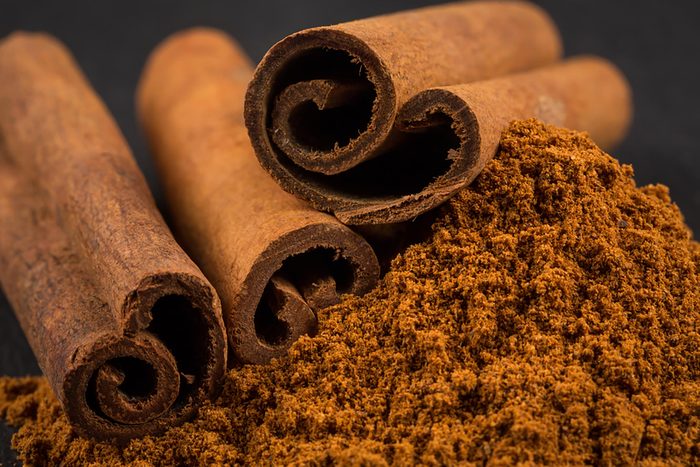
Cinnamon
This sweet seasoning contains a compound called hydroxychalcone, which may stimulate insulin receptors on cells and, in turn, improve your body’s ability to absorb blood sugar. A study published in 2019 in the International Journal of Food Science found that consuming 1 to 2 teaspoons (3 to 6 grams) of cinnamon per day can have a positive impact on blood glucose levels. It’s also loaded with polyphenols, antioxidants that gather up all the free radicals in your blood to protect you from cancer and also lower systemic inflammation, further guarding you against diabetes and heart disease.
But that’s not the only reason cinnamon is on the list of foods for people with diabetes: A study published in a 2017 issue of Metabolism: Clinical and Experimental found that an essential oil in cinnamon could be used as a treatment to fight obesity, a risk factor for type 2 diabetes.

Collard greens
Dark green leafy vegetables like collard greens are excellent sources of vitamin C, which helps lower cortisol in the body and consequently reduces inflammation as well. Collard greens (and other cruciferous veggies like kale and Brussels sprouts) are also a good source of alpha-lipoic acid, a micronutrient that helps the body deal with stress, according to a 2018 report in Cochrane Database of Systematic Reviews. Good news for people with diabetes: Alpha-lipoic acid also helps reduce blood sugar and can help to strengthen the nerves damaged by diabetic neuropathy, also per the report. Just be careful not to overcook this diabetic food, which creates a strong sulfur smell. Just five minutes of steaming, and you’re done.
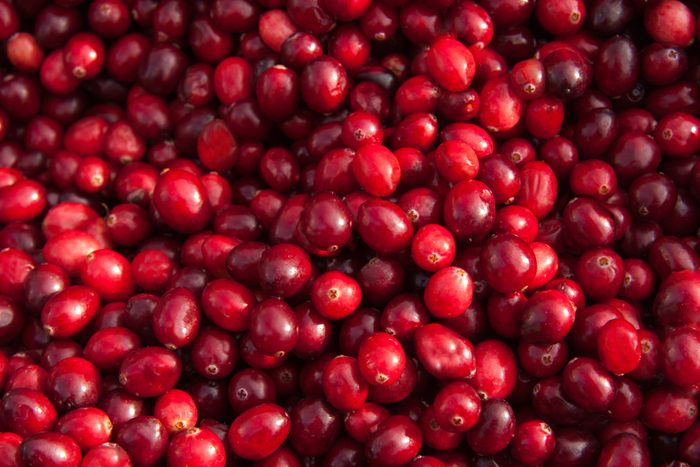
Cranberries
Cranberries contain a large amount of phytonutrients. One of these nutrients, anthocyanins, is especially good for people with diabetes. They also contain antioxidants that lower cholesterol and blood pressure. Cranberries contain a type of polyphenol called proanthocyanidins. Research published in 2015 in Advances in Nutrition analyzed several studies that looked at cranberry juice and fruit and its impact on blood sugar. Some studies found that cranberries can help with glucose regulation, particularly after meals. Others found it had little impact. But because cranberries offer an array of possible health benefits, there are still plenty of reasons to add them to your diet.

Apples
An apple a day really does keep the doctor away. Plus, it’s one of the healthy foods for people with diabetes. Eating apples can also lower the risk of developing type 2 diabetes. In fact, a review of studies, published in 2017 in the journal Food & Function, found that eating an apple (or even a pear) once a week was associated with a reduced risk for type 2.

Asparagus
A study published in 2018 in the journal PLoS One showed that people with type 2 diabetes tend to be deficient in glutathione, an antioxidant found in abundance in asparagus. For instance, participants in the study with diabetic retinopathy were found to have lower levels of glutathione than those who didn’t have the disease. Add this vegetable to your cart full of healthy foods for diabetes.

Turmeric
Turmeric does more than add color and spice to many curry dishes; it also helps lower blood glucose and may play a role in preventing type 2 diabetes. Curcumin, the active ingredient in turmeric, is the compound believed to regulate fat metabolism in the body. Curcumin acts directly on fat cells, pancreatic cells, kidney cells, and muscle cells, dampening inflammation and blocking the activities of cancer-causing tumor necrosis factor and interleukin-6. Experts believe the combined action of all of these factors together gives curcumin the power to reverse insulin resistance, high blood sugar and high cholesterol, and other symptoms linked to obesity, a risk factor for type 2 diabetes, according to a review of studies published in Evidence-based Complementary and Alternative Medicine.
Now that you know what to get from the store, use this list of foods for people with diabetes the next time you go grocery shopping. While it can be tough to tackle exactly what to eat when you have diabetes, we have plenty of resources, like these nutritionists’ clever tricks for grocery shopping with diabetes.